At-Home Keratin Treatments Get Me and My Frizzy Hair Through the Summer Humidity
Magic in a bottle.


If your natural hair runs on the can’t-be-tamed side of the frizz spectrum and you'd prefer to skip daily styling (even with the best hair straightener at the ready), you may have explored keratin treatments to control your curls. There are the in-salon options, and while highly effective, they can cost hundreds of dollars and take up a whole afternoon. Then, there are the best at-home keratin treatments, which offer similar hair-smoothing benefits at a fraction of the price.
But—and this is the big one—it’s always important to do your research before starting in on a new haircare regimen, especially one of this caliber. There are chemicals to be wary of; I'm looking at you, formaldehyde. Searching for labels like “no formaldehyde” or “formaldehyde free” on your at-home keratin bottle is a good start, but you’re going to want to do some extra digging.
"It's crucial to select at-home keratin treatment kits specifically formulated for your hair type and needs," shares board-certified trichologist Penny James, IAT, AOT. "By carefully reading reviews and instructions, choose a product that will deliver the desired results." Not all at-home keratin treatments are created equal and it's important to familiarize yourself with the pros and cons of each formula. For example, tightly curled or coily hair will likely require a more intense treatment to change the hair shape, whereas wavy or loosely curled hair will find frizz-taming success with a keratin-infused product.
Ahead, James and Alexandra Arriaga, a hair chemist and medical researcher, answer all your questions about at-home keratin treatments. Keep scrolling to find the best at-home keratin treatments on the market so you can get your silkiest hair yet.
The Best At-Home Keratin Treatments
- The Best At-Home Keratin Treatment Overall: Virtue Restorative, Hydrating Treatment Hair Mask With Keratin
- The Best At-Home Keratin Treatment Mask: K18 Leave-In Molecular Repair Hair Mask
- The Most Nourishing At-Home Keratin Treatment: Davines Naturaltech Nourishing Keratin Sealer
- The Best Leave-In At-Home Keratin Treatment: It's a 10 Miracle Leave-In Conditioner Plus Keratin
- The Best New At-Home Keratin Treatment: COSRX Peptide 132 Hair Bond Repair Treatment

Even if your hair has never touched dye or chemical treatments, it could use some TLC from time to time. This hair mask will provide just that. Every product in Virtue's line features Alpha Keratin 60ku, a protein that's identical to the keratin that makes up 90 percent of our hair. While this mask works to provide intense hydration, it also fills and smooths the cracks of damage. In the end, you're left with softer, less-damaged hair that's easier to manage.
Type: Keratin-infused product
Formulation: Mask
Size: 5 oz.
Key Ingredients: Keratin (repairing); Baobab Seed Oil (emollient); Brown Algae Extract (heat protection); Amaranthus Caudatus Seed Extract (color and shine enhancing)
Hair Type: All
What I Love: Clinically tested; Vegan; Color safe; Repairs damage; Free of sulfates and parabens; Not heavy; Detangles; Really nice smell
What I Don't: While not unpleasant, the smell is quite strong; Won't change hair texture
Review for MC: "Three minutes to softer, less damaged hair? I'll happily take it. Upon first application, I could tell this mask was luxe based simply on its thick, jelly-like texture and gourmand smell. After a thorough rinse, my hair had a straight-from-the-salon slip to it that, until now, I've found impossible to duplicate. After drying, I was so impressed with the softness and shine—especially after a visit from my Dyson Airwrap. Now two days out from wash day, I'm still impressed and I've barely noticed a frizzy strand or stray hair." — Sophia Vilensky, Contributing Beauty Writer

Sophia Vilensky testing Virtue's Restorative, Hydrating Treatment Mask with Keratin.
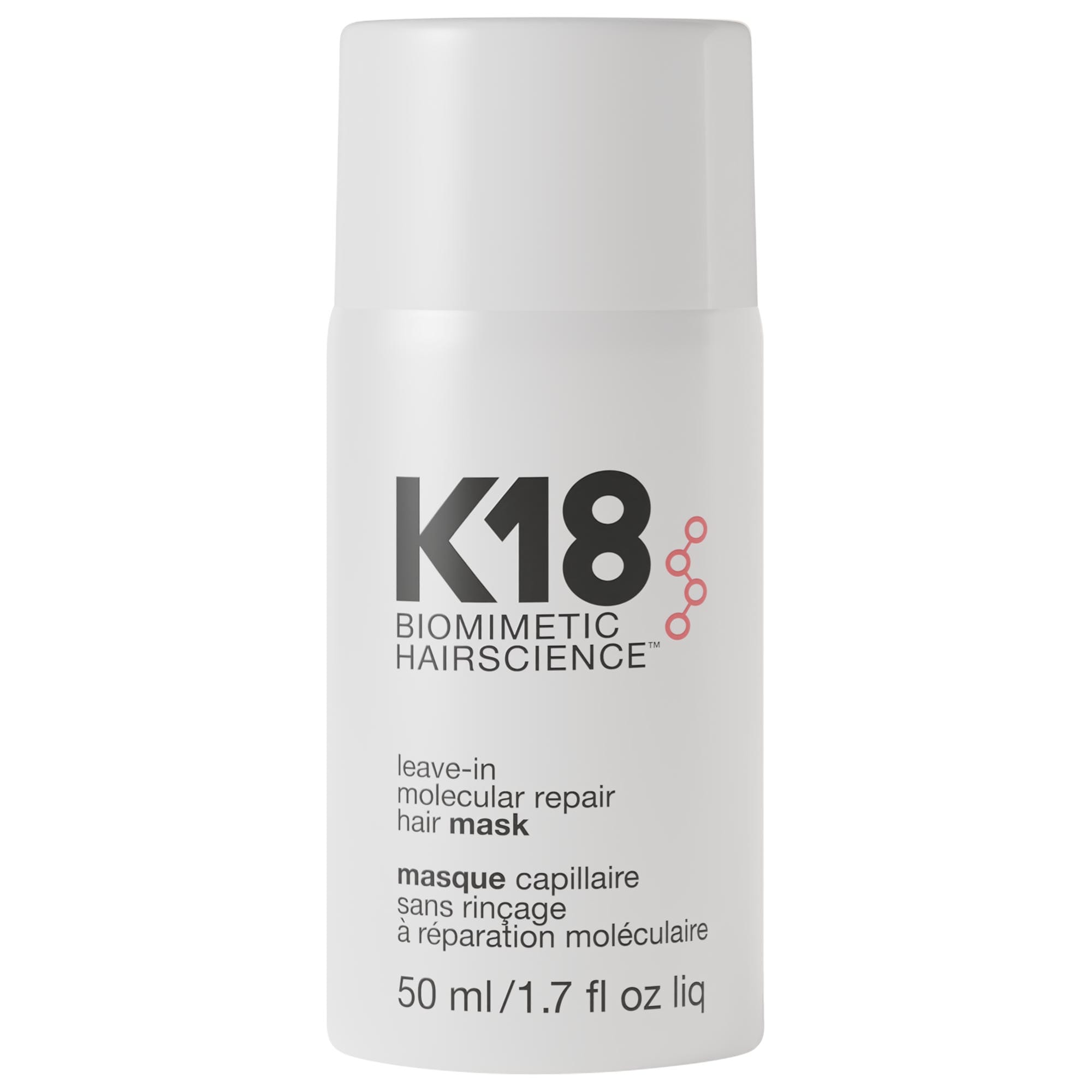
The second beauty editors start chatting about leave-in keratin treatments, K18 is immediately thrown into the conversation. Creating hair "that feels like new" is one of its key claims. It features a vegan, color-safe formula that effectively seals damaged hair cuticles over several treatments. While this will boost shine and does have frizz-fighting properties commonly associated with professional keratin treatments, it doesn't create naturally straight hair. Those with curly hair will still have curly hair after this treatment—it'll just feel smoother, softer, and healthier.
Type: Keratin-infused product
Formulation: Mask
Size: 1.3 oz.
Key Ingredients: Signature K18Peptide (repairing)
Hair Type: All hair types
What I Love: Repairs damage; Restores shine; No need for rinsing; Split ends feel miles away
What I Don't: Might weigh down or dry out fine hair; Won't change hair texture; More expensive than other options
Review for MC: “K18’s leave-in treatment strengthened my hair after first use while keeping the frizz of my fine hair at bay. For me, its most noteworthy features are how lightweight and easy it makes styling after a wash. Dare I say, I wish I had spent money on this instead of a keratin treatment at the salon. Plus, once Sofia Richie endorsed K18, I knew it was worth the hype.” — Malcia Greene, Contributing Beauty Writer
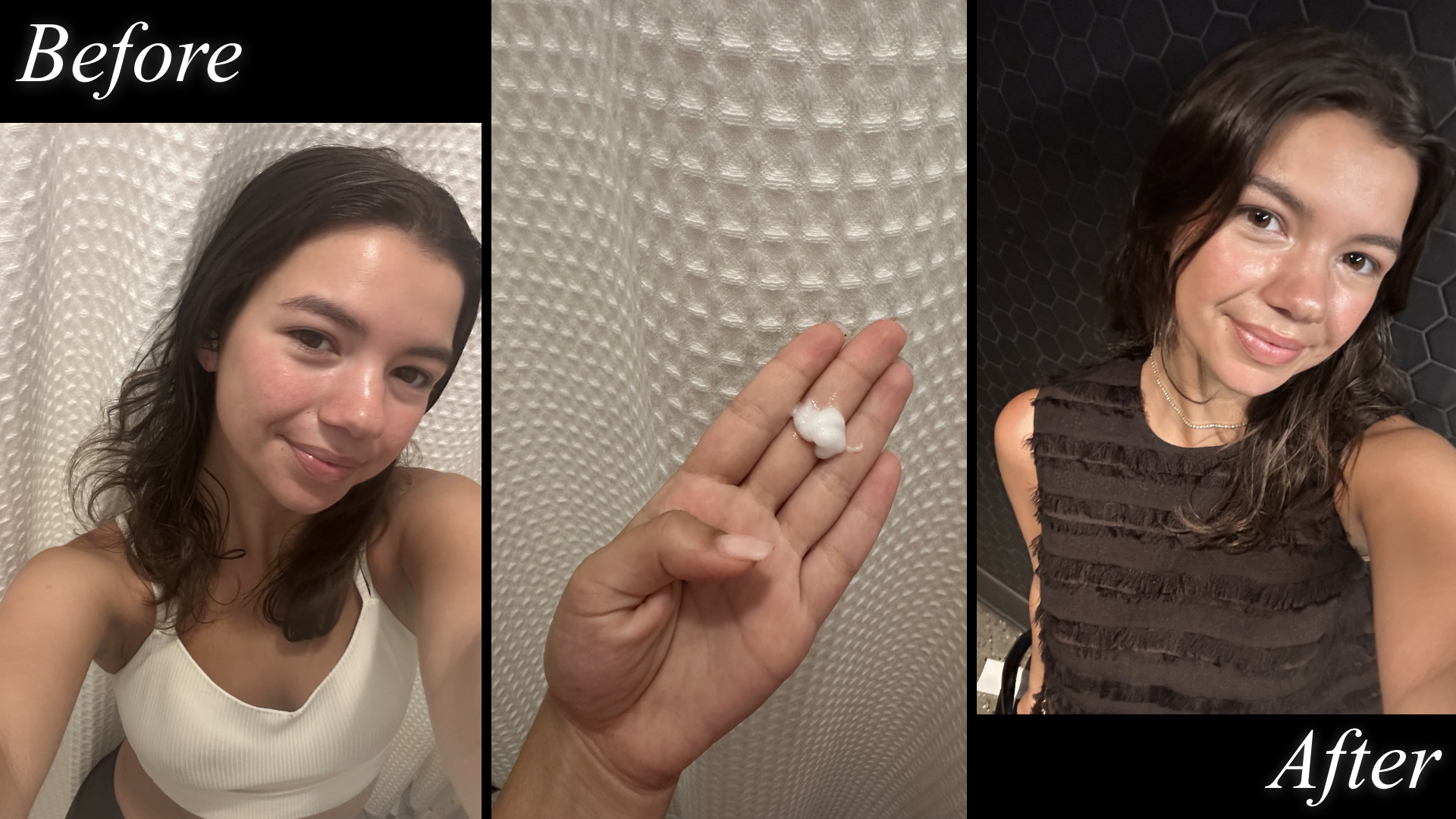
Malcia Greene testing K18's Leave-In Molecular Repair Hair Mask.
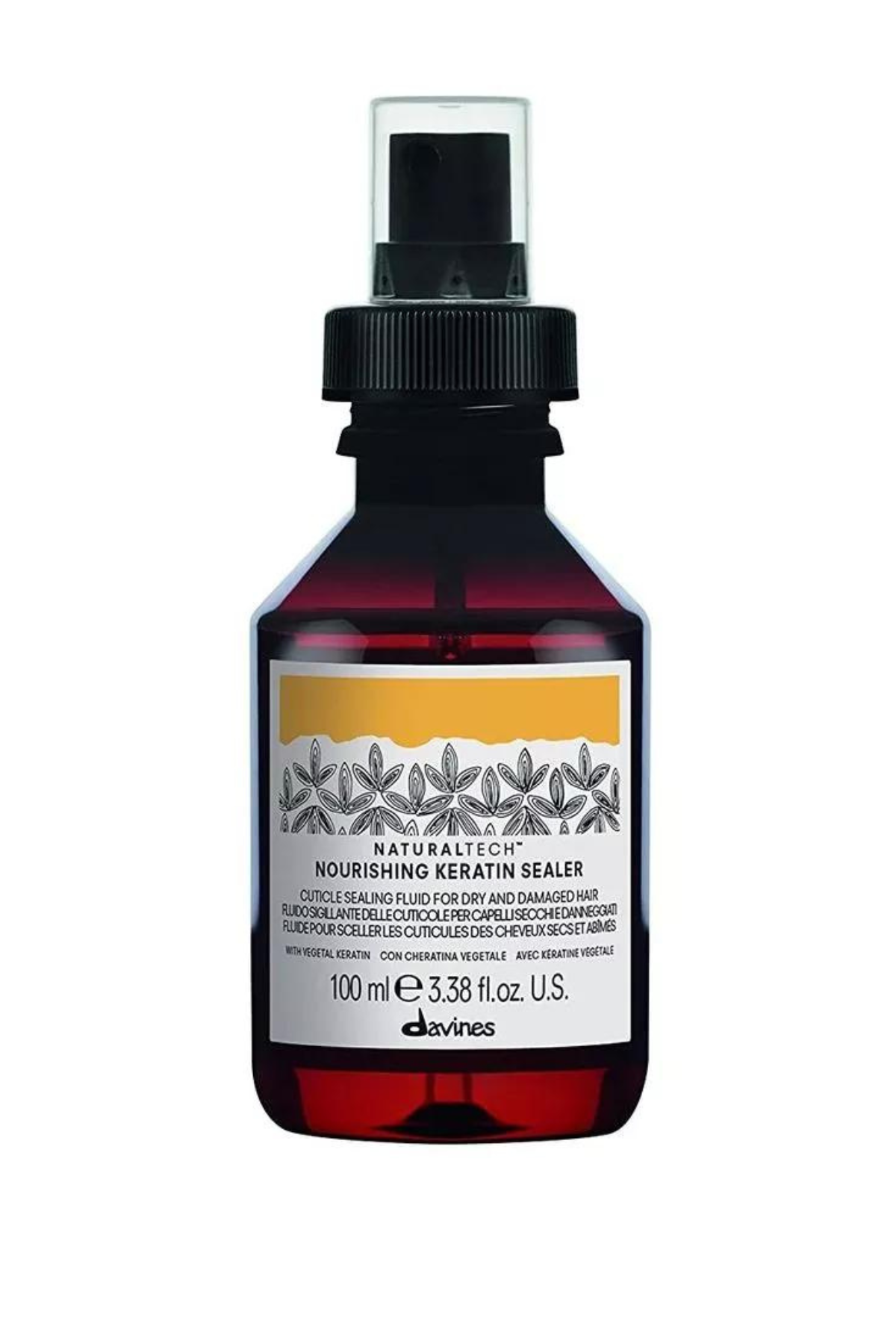
This top-rated oil works to repair the hair cuticle from the inside out. When the cuticle is sealed up tight, water can't sneak in, and frizz is avoided. Sounds pretty good, huh? After a few spritzes of this beautiful and fresh-smelling serum-oil hybrid, your strands will dry strong, smooth, and shiny.
Type: Keratin-infused product
Formulation: Serum-oil spray
Size: 3.38 oz.
Key Ingredients: None listed
Hair Type: Dry or damaged
What I Love: Boosts shine; Repairs hair over time; Gorgeous smell; You see results immediately
What I Don't: Won't change hair texture; No heat protection
Review for MC: "While a few sprays applied to my post-shower, towel-dried hair certainly makes combing a breeze, it's the once-dried benefits of this serum-oil hybrid that I really live for. I don't have a magnifying glass (should I get one?), but it seems my split ends are gone and the shine is like nothing else. I have fairly thin strands but a lot of them, and I never feel weighed down, either." — Sophia Vilensky, Contributing Beauty Writer

Sophia Vilensky testing Davines' Nourishing Keratin Sealer.
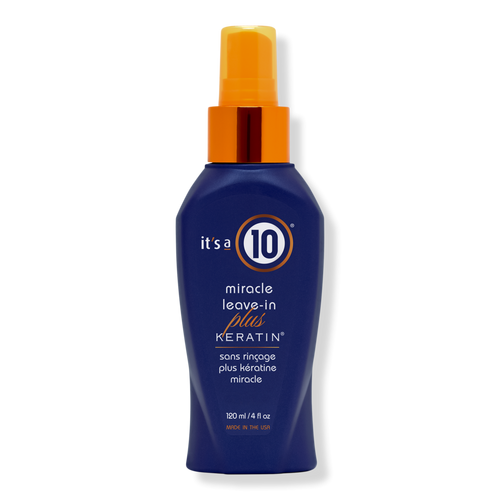
If the mere thought of detangling gives you anxiety, relieve yourself by reaching for this miracle worker of a styling spray, which is infused with hydrolyzed keratin. The brand is best known for its strengthening products to make your hair feel more manageable. After spritzing this all over your head, you'll be able to easily glide your wide-tooth comb through your hair—without the stress of that strenuous arm workout.
Type: Keratin-infused product
Formulation: Spray
Size: 4 oz.
Key Ingredients: Hydrolyzed keratin (moisturizing); Panthenol (fortifying); Sunflower seed extract (softening)
Hair Type: All
What I Love: Detangles; Protects from heat damage; Can be used daily; No need to rinse
What I Don't: Fragrant; Won't change hair texture
Review for MC: "While the scent is a bit much for me, the sheer detangling prowess of this leave-in conditioner makes it all worth it. Aside from making it easy for me to make my way through any one-time knots with a comb, it strengthens, smooths, and offers my precious strands some heat protection. I hate when I get out of the shower and realize I forgot to use a mask, and with this on my nightstand, my hair still stands a chance post-rinse." — Sophia Vilensky, Contributing Beauty Writer
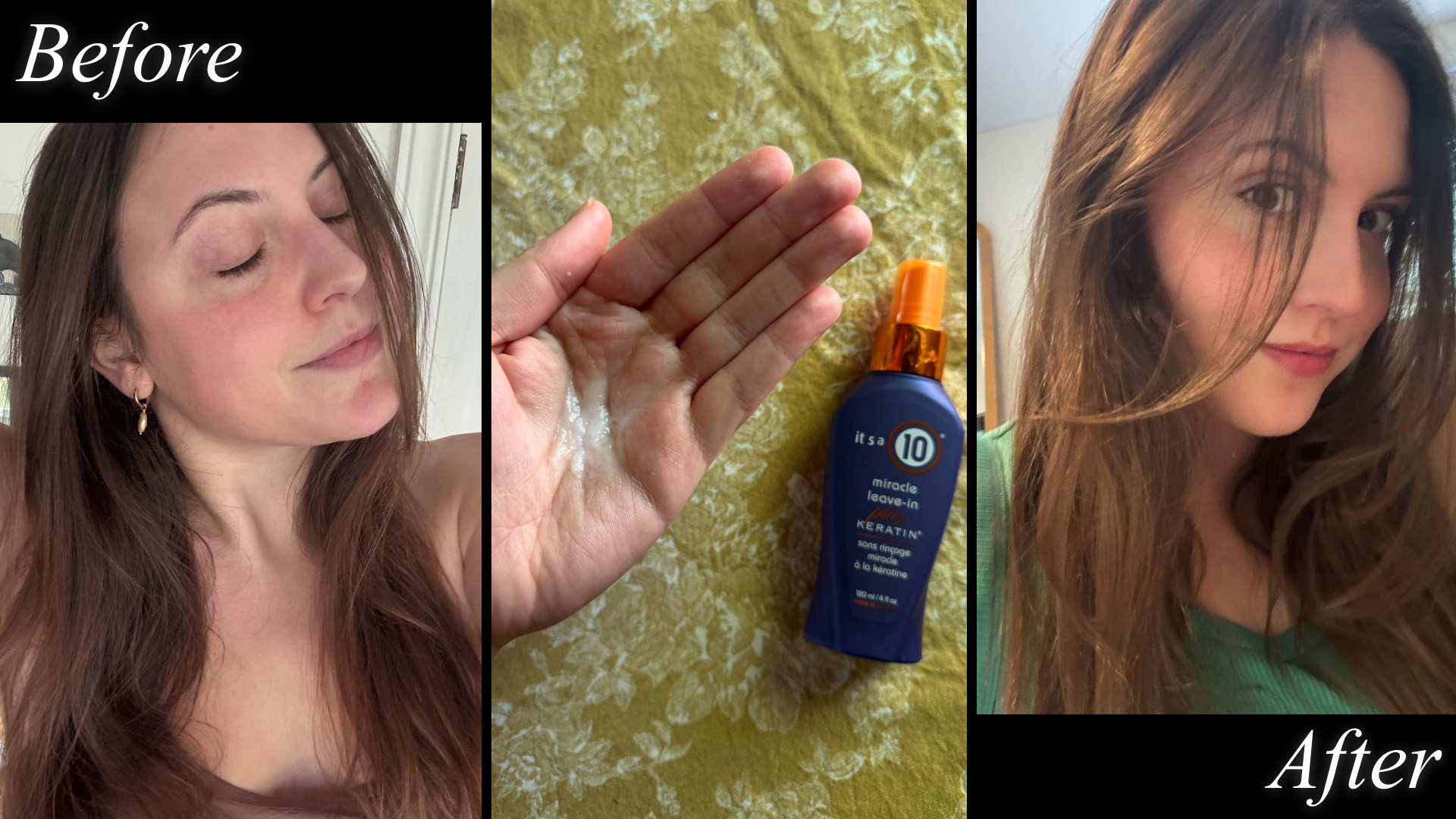
Sophia Vilensky testing the It's a 10 Miracle Leave-In with Keratin.
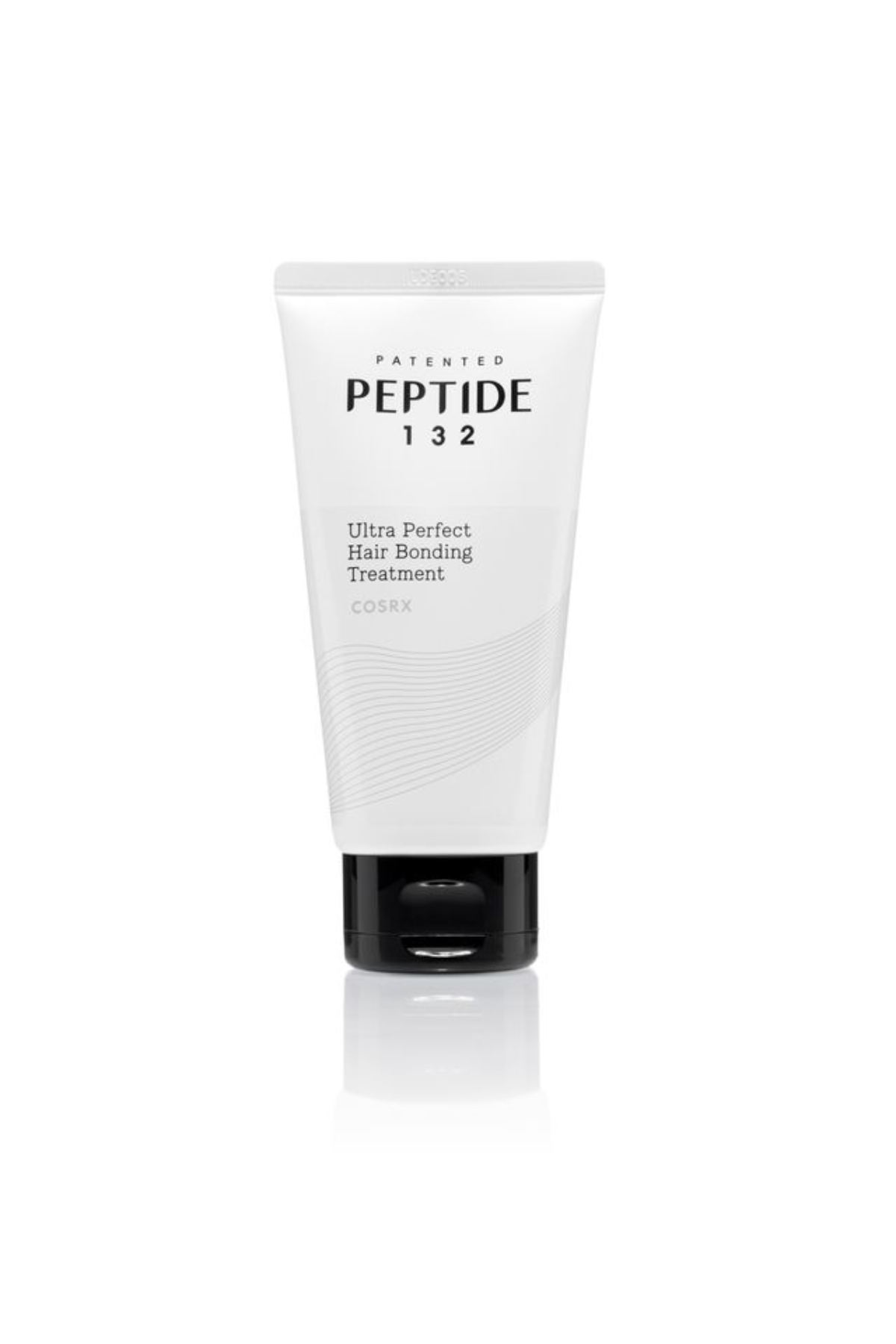
Korean beauty brand CosRX is constantly going viral for their skincare products, and this—their first foray into haircare!—will likely be the next innovation to take over your feed. Part of their new Ultra Perfect Hair Bonding Collection, the rinse-out mask was formulated with PEPTIDE-132, a patented, low-molecular-weight peptide that was clinically developed to "restore damaged hair from within."
Type: Keratin-infused product
Formulation: Mask
Size: 4 oz.
Key Ingredients: Peptide-132 (restoring)
Hair Type: All
What I Love: Leaves hair soft and smooth; Rinses out easily; Easy to dispense; More affordable than other options
What I Don't: Won't change hair texture
Review for MC: "I'm a big fan of COSRX, and when I saw that they were taking their scientific skincare approach to the world of hair, I was immediately enticed. After rinsing the shampoo out of my hair and squeezing out excess water, I applied a little of this nice-smelling cream and waited for it to do its magic. I rinsed it out, let it air dry, and found myself with soft, smooth hair—despite the scraggle on my head just an hour before." — Sophia Vilensky, Contributing Beauty Writer

Sophia Vilensky testing the COSRX Peptide132 Hair Bond Repair Treatment.

Welcome this conditioner into your daily beauty regimen, and you can wave goodbye to frizz, split ends, and fragile hair that breaks at the slightest swipe of a brush. Keratin and argan oil come together in this beloved formula to repair and strengthen your hair. The brand also boasts a corresponding shampoo if you want to take things a step further.
Type: Keratin-infused product
Formulation: Cream conditioner
Size: 13 oz.
Key Ingredients: Keratin proteins and Argan oil blend (shine enhancing)
Hair Type: All
What I Love: Safe for daily use, Helps repair split ends; Nice smell; Doesn't leave hair feeling oily; Affordable; Impressive at tackling frizz
What I Don't: Won't change hair texture
Review for MC: "If you're looking for a keratin-infused product to enjoy without adding something new to your routine, this is the one for you. Gentle enough for every day use, it won't weigh down your hair—just give you plenty of shine. I love the smell, and that I don't have to think too hard about making it work; it's in the shower, I reach for it, I rinse, and next time, I repeat." — Sophia Vilensky, Contributing Beauty Writer
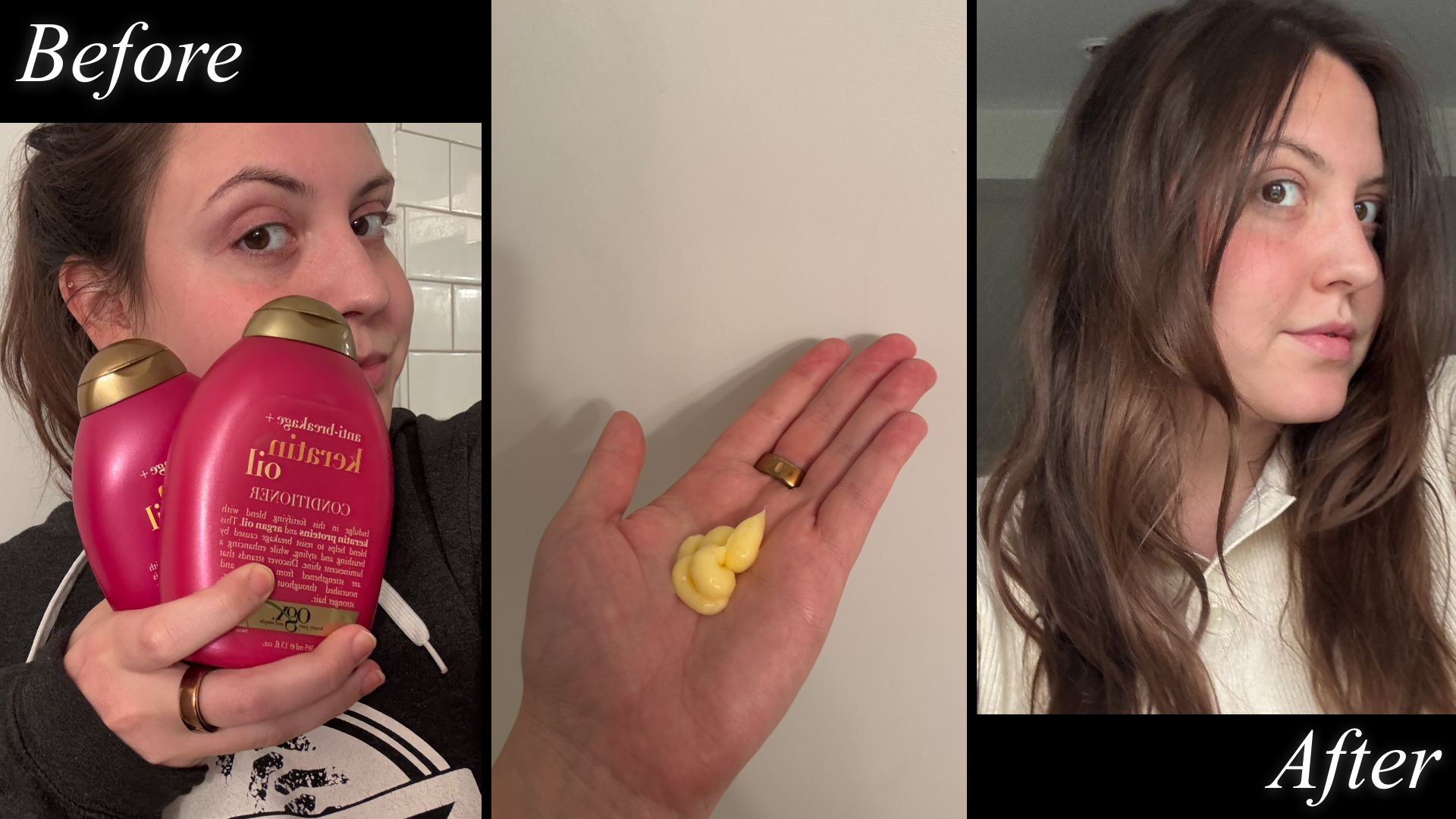
Sophia Vilensky testing the OGX Keratin Oil Shampoo and Conditioner.
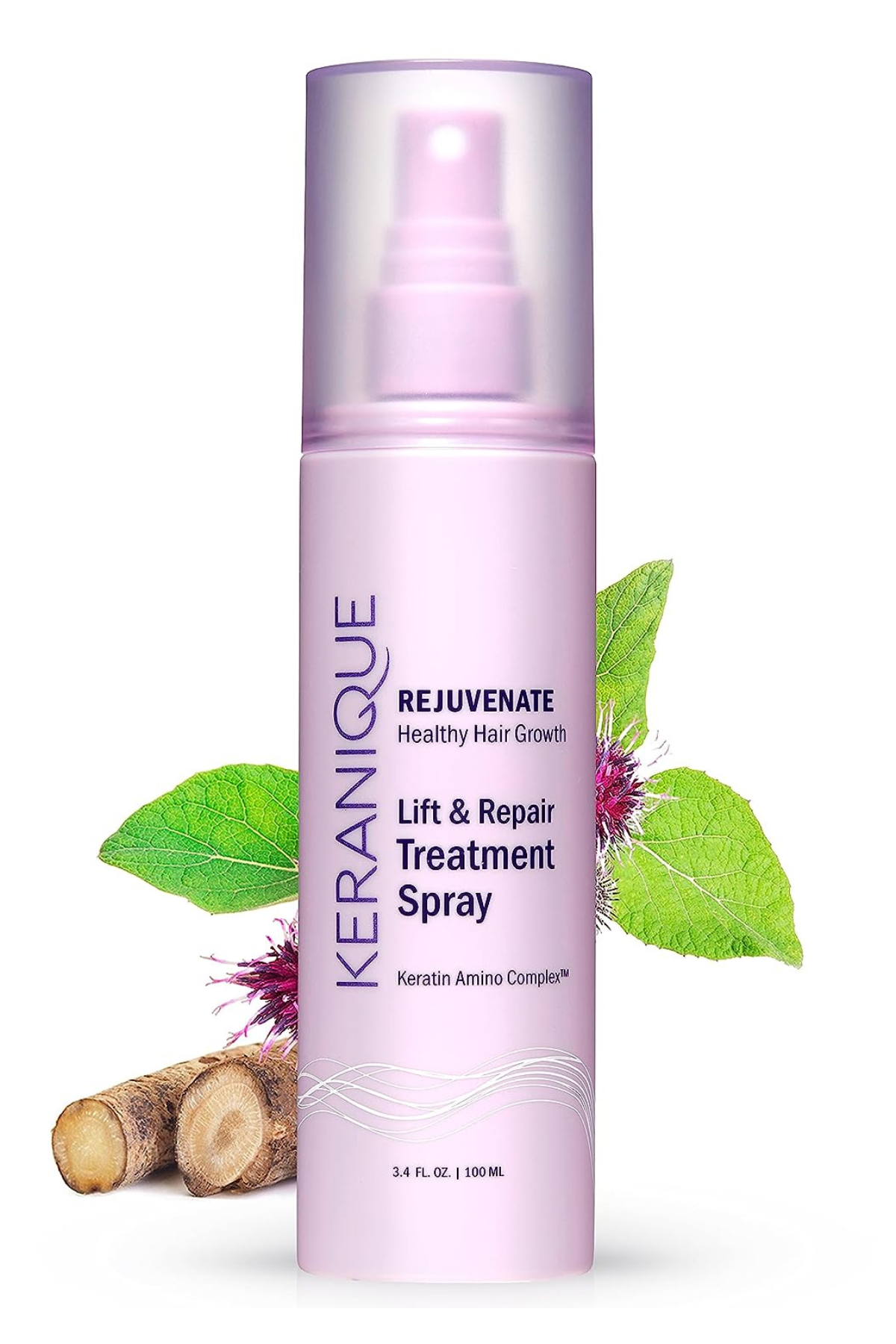
This spray's keratin amino complex nourishes, strengthens, and protects your hair while adding volume. It’ll give your hair a lift and make it feel thicker and fuller—even if you're dealing with a thin, fine texture. I'm also impressed by this product's ability to combat frizz. It deserves flowers for its lightweight texture, though some note it's a bit sticky.
Type: Keratin-infused product
Formulation: Spray
Size: 3.4 oz.
Key Ingredients: Proprietary keratin amino (nourishing)
Hair Type: Fine and thin
What I Love: Frizz-fighting; Volumizing; Easy to use
What I Don't: Some find the texture too sticky; Won't change hair texture
Customer Review: "I have very thin, flat hair and this actually gives it body (without blow-drying even!!) and doesn't change your hair texture or make it feel oily. I'm 28 and wish I knew about this product years ago. You have to see for yourself." — Ulta
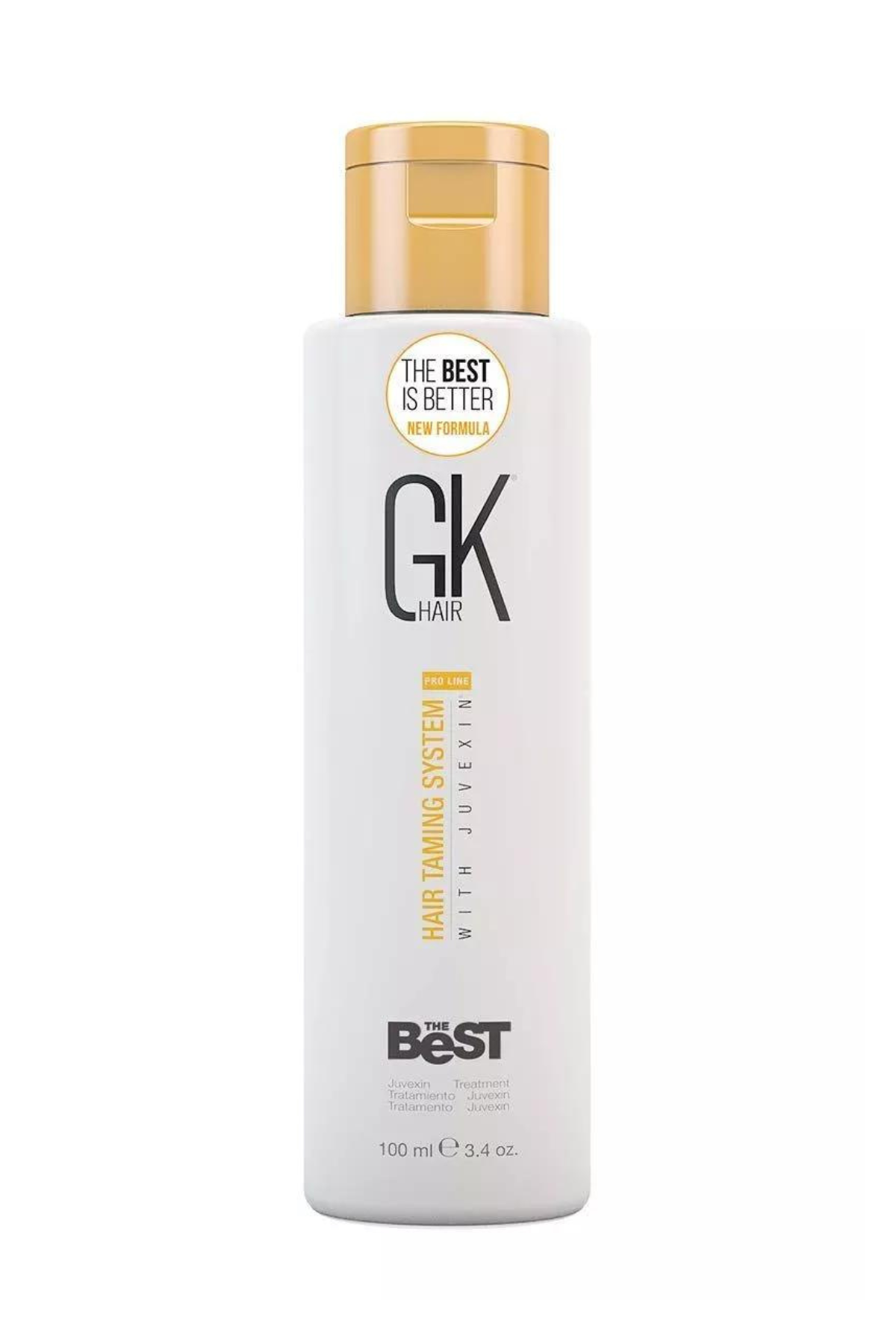
Clear your schedule, then get ready for one of the most effective at-home keratin treatments available. Start with clean hair, then use the included application brush to (rather painstakingly) smooth the cream from root to tip on half-inch sections of hair. Wait for up to an hour depending on your hair texture, then blow dry and straighten to silky smooth protection. The treatment's proprietary juvexin, a keratin-based protein blend, will keep your hair smooth for three to five months.
Type: Keratin treatment
Formulation: Shampoo and gel
Size: 3.4 oz.
Key Ingredients: Juvexin V2 (repairing and strengthening); Natural seed extracts (hydrating)
Hair Type: Wavy
What I Love: Lasts three to five months; Mimics salon results;
What I Don't: Requires precise application; Takes one hour to activate
Customer Review: "I absolutely love this product. I have 4C hair, and my hairstylist suggested getting a keratin treatment, which she said is the only one she uses. It lasts about three months, but I do wash my hair every two weeks, so it could last longer. I haven't attempted to apply it myself, so I can't speak to the process, but one bottle was more than enough for me. My hairstylist suggested trying to stretch my hair washing to four weeks to have the keratin last longer, and I can already tell this will last longer this time around." — Amazon
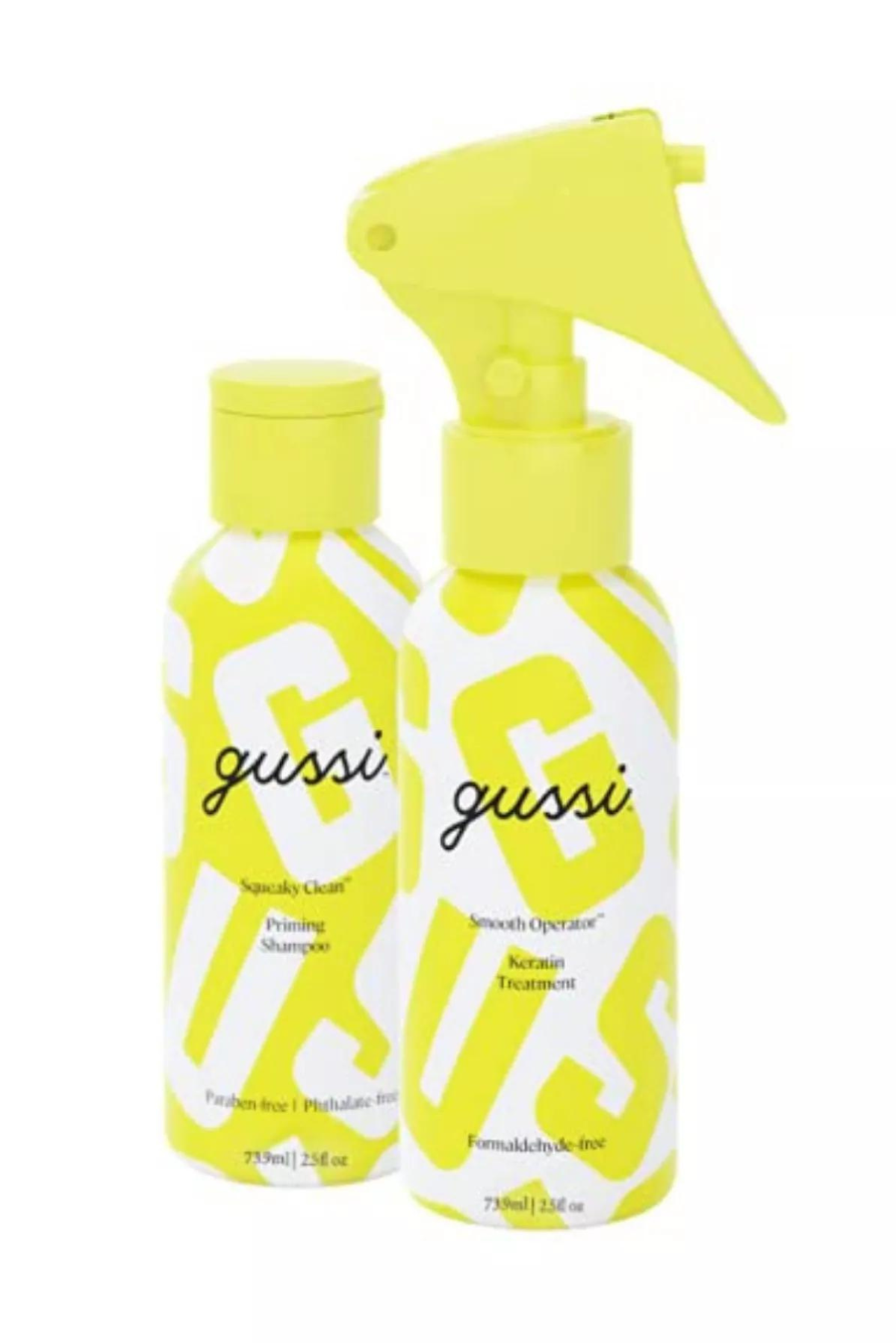
Alon Shalom, owner of Alon Shalom Salon in West Hollywood, California, is obsessed with Gussi's results. "One of my long-time clients recently came in for her balayage and the restored health of her hair blew me away—it was so much stronger and shinier than usual," he says. "I was totally shocked when she told me this was all from Gussi’s At-home Keratin Treatment!" The kit promises results lasting a grand total of six weeks and works across all hair types. That said, it's not going to remove curls—it'll just elongate the curl pattern.
Type: Keratin treatment
Formulation: Priming shampoo and treatment spray
Size: 2.5 oz.
Key Ingredients: Keratin amino acids (strengthening); Hydrogenated castor oil (smoothing); Moringa seed oil (moisturizing)
Hair Type: All
What I Love: Long-lasting; Mimics salon results; Fast-acting
What I Don't: Only lasts six weeks; Won't permanently straighten hair
Customer Review: "I have had professional keratin treatment done to help with the frizzies that come with living in a Florida sauna in the summer with fine curly hair. I was hesitant to try this on my own, but also hesitant to pay salon prices..so lets go. The process was pretty painless but did require me to find and use my flat iron. The instructions were easy to follow. The scent was nice but not overpowering.My hair looks great and I think it will continue to as the heat and humidity ratchets up." — Amazon
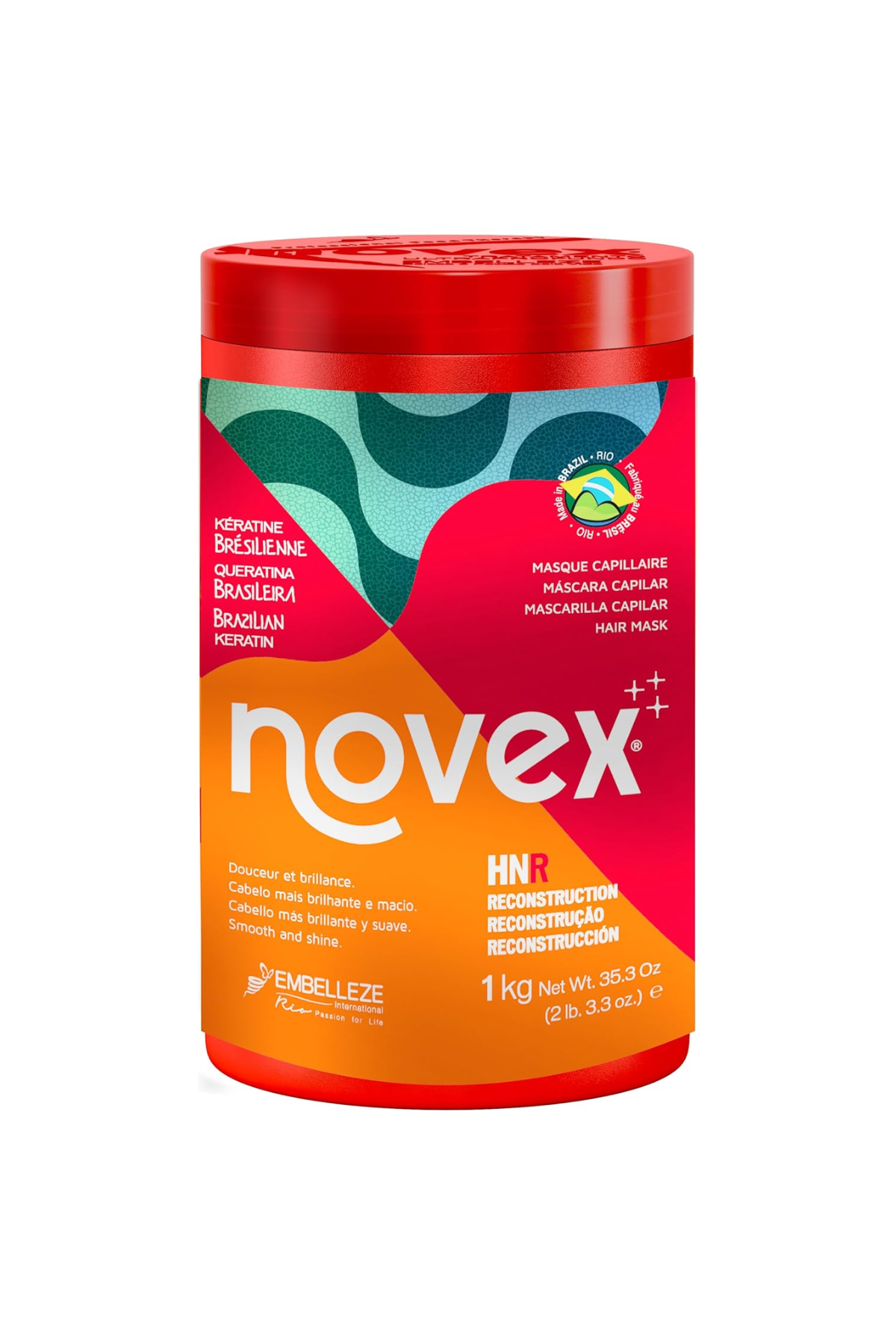
This at-home keratin mask is an Amazon gem, boasting more than 1,200 five-star ratings thanks to its quick-acting, extremely effective formula. The key to its success? It uses liquid keratin to perform damage control on weak hair follicles, resulting in stronger, straighter, and shinier hair after just one use. It also reduces volume and straightens existing curl patterns, making it more suitable for people with tighter curl patterns than loose waves.
Type: Keratin-infused product
Formulation: Mask
Size: 35.3 oz.
Key Ingredients: None listed
Hair Type: All
What I Love: Powerful results; Can be used regularly in place of your conditioner; Huge container gives you major value
What I Don't: Some say it weighs hair down; Won't change hair texture
Customer Review: "I have been using this product for almost two years. My hair is curly and very frizzy without product. I left it in my hair one day and my curls were perfect. This is the first product I have found that makes my hair look extremely healthy. I don’t know think I can live without Novex. Seriously a game changer." — Amazon
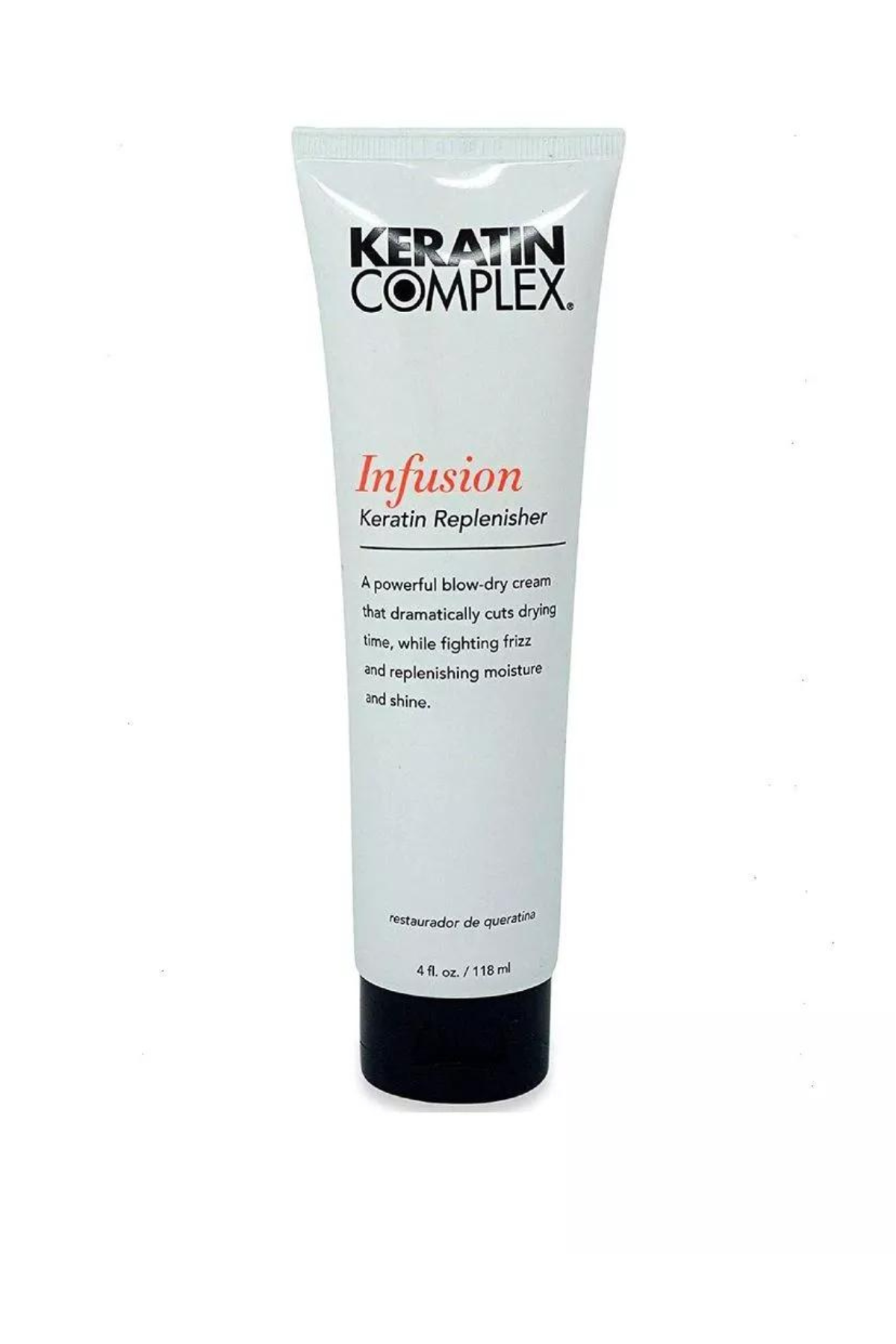
Hydrolyzed keratin is the second ingredient in this effective leave-in cream, which also contains strengthening proteins such as soy and wheat. It really will minimize the amount of time you spend wielding a hair dryer and extend the number of days before you need to do it again. Unlike more intense, heat-activated treatments, this simple blow-dry cream can be used on repeat and will take all of two seconds away from your day. It's not going to break down your hair's bonds for jaw-on-the-floor straightening results, but it will give you smoother, shinier hair every damn time.
Type: Keratin-infused product
Formulation: Cream
Size: 4 oz.
Key Ingredients: Rosemary leaf extract (conditioning and calming); Hydrolyzed wheat protein (strengthening); Soy protein (frizz control)
Hair Type: All
What I Love: Boosts hydration; Fights frizz; Lightweight; Easy to use
What I Don't: Doesn't have much of an impact on curly or coily hair; Won't change hair texture
Customer Review: "The older I get, the more issues I have been having with my hair always reverting to wavy and frizzy. Just a little bit of this product in my hair before I blow dry keeps it straight and shiny for days. I have been able to add another day between needing to wash my hair, and barely have to do anything to it on day two or three. It's the first product I have tried that has made such a positive difference. I always stock up when it's on sale." — Ulta
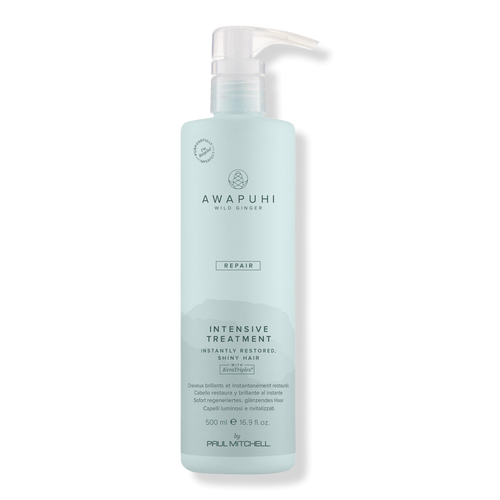
This intensive treatment from Paul Mitchell’s Awapuhi line is formulated with KeraTriplex and Awapuhi extract to restore damage, leaving you with your softest, shiniest, and most moisturized hair yet. The invigorating scent of ginger tea and florals in this formula is borderline addictive. While it works wonders on the shine front, you'll probably want to find an everyday treatment to help control frizz—the mask is only designed to be used once per week.
Type: Keratin-infused product
Formulation: Cream
Size: 16.9 oz.
Key Ingredients: KeraTriplex keratin protein complex (replenishing); Awapuhi extract (moisturizing)
Hair Type: All
What I Love: Hydrating; Restores shine; Color safe
What I Don't: Not the best option for frizzy hair; More expensive than other options; Won't change hair texture
Customer Review: "I wont be using any other products on my hair. This product line smells like an expensive spa in the middle of the jungle in Costa Rica. My hair has never looked and felt so healthy and shiny! I get compliments all the time and people ask me what I use." — Ulta
What to Look For In An At-Home Keratin Treatment
- Formeldahyde
Finding the best at-home keratin treatment is less about what you should see on the label and more about what you shouldn’t see. The big chemical to avoid is a carcinogen called formaldehyde, “a colorless, strong-smelling gas that presents a health hazard when breathed into the lungs, gets into the eyes, or touches the skin,” says Arriaga.
According to the National Cancer Institute, when formaldehyde reaches a certain concentration in the air (0.1 ppm to be exact), you may experience watery eyes, burning sensations in the eyes, nose, and throat, coughing, wheezing, nausea, and skin irritation.
“Many keratin treatments, both professional and at-home options, contain the liquid form of formaldehyde, which is called methylene glycol,” explains the expert. “To identify products containing formaldehyde-related ingredients, look for the following words on the label: Formaldehyde, formalin, and methylene glycol.”
- Keratin
There's a big difference between a true, at-home keratin treatment that can be likened to what you get in a salon and a keratin-infused product—marketing, however, makes sorting through products pretty confusing.
The former uses a chemical straightening solution to break and re-seal the hair cuticle, creating a straighter, frizz-free shape. "Avoid any at-home keratin treatment if you have weakening hair," explains James, noting it can cause further dryness and breakage.
A keratin-infused product, on the other hand, is actually beneficial for hair health. "Keratin-infused products are hair care products that contain keratin, a protein naturally found in hair. These products help strengthen, condition, and repair damaged hair," explains James. "Keratin-infused products work by smoothing the hair cuticle, reducing frizz, and restoring elasticity, resulting in softer, shinier, and more manageable locks."
- Hair Type
"It's crucial to select at-home keratin treatment kits specifically formulated for your hair type and needs. By carefully reading reviews and instructions, choose a product that will deliver the desired results," shares James.
Tightly curled or coily hair will likely require a more intense treatment to change the hair shape (just make sure you're going to a reputable provider and have selected a formaldehyde-free treatment), whereas wavy or loosely curled hair will find frizz-taming success with a keratin-infused product.
What’s the Difference Between an At-Home Keratin Treatment and a Salon Keratin Treatment?
At base level, keratin is a protein found in the hair. It fills the frizz-causing holes in the hair cuticle; the more keratin you have, the smoother, glossier, and shinier your hair will be.
Still, as mentioned, not every keratin treatment is created equally. In a salon, you can expect more dramatic, longer-lasting results. An in-salon keratin treatment can take curly, coily hair to a straighter state that lasts for weeks or more.
At-home treatments, which can take the form of conditioners, shampoos, masks, or, occasionally, salon-mimicking systems, can work wonders for frizz, but won’t necessarily last through dozens of shampoos or change your natural texture. The results will also differ across hair types.
How Do Keratin Treatments Work?
When you go to a salon or purchase a professional-grade at-home keratin treatment kit, the hair is typically straightened with a solution containing glyoxylic acid or formaldehyde, explains Arriaga. “When some of these solutions are applied on the hair, the bonds inside each strand are broken and resealed in a straighter position.” Dr. James adds that a minimum temperature of 450 degrees is needed to seal the deal (pun very much intended) and “glue” the cuticle back together.
Meanwhile, keratin-infused solutions and products “work by coating each individual strand to smooth down the hair cuticles and give a glossy, frizz-free finish," says Dr. James. "This coating wears off over time, however."
How Do I Do a Keratin Treatment At Home?
As tempting as it may be, don’t go straight into treatment mode. Preparation is just as important.
“The pre-treatment will be shampooing your hair with a sulfate-free shampoo,” says Dr. James. Arriaga also recommends getting your hair colored ahead of your treatment. “Keratin will help preserve the color,” she adds. Just give yourself a few days or weeks of buffer time.
After you finish your at-home treatment, there are a few key things to avoid, like getting your hair wet or direct sun exposure. “Even keratin treatments that claim you can wash your hair immediately benefit from waiting at least 24 hours," says Alexandra Efstratiou, a New York-based stylist. “It just gives the hair and product time to settle in together.”
How Do I Make At-Home Keratin Treatment Last?
Simple keratin treatment products that aren't heat-activated provide results that last until your next shampoo. With continued use, your hair may become naturally silkier and smoother. But if you're using a more intense at-home treatment that's designed to last for months, reducing your wash day frequency can be beneficial. “The longevity of a keratin is primarily based on your frequency of washing, so the less often you wash, the better,” Efstratiou says.
In between treatments, you'll also want to use silicone-free hair care products. Silicone is like a band-aid for the hair. "Most silicones that are on the market are very heavy, and they create a residue on the follicle that just lies on the hair. It doesn't penetrate, but it can be damaging," explains Shay Hoelscher, founder and owner of haircare brand Privé.
Stylists also recommend using hair styling products infused with keratin to keep your treatment looking fresh. “I like to recommend using keratin-infused products on days you do wash and style your hair,” says Shalom. “Extra doses of keratin help to refresh the treatment results.”
How Often Can I Do an At-Home Keratin Treatment?
If you're using keratin-infused styling products that don't require heat activation, you're free to use your product of choice every single wash or at least once per week. That said, more intense treatments requiring heat activation should be applied sparingly. They're designed to last at least a couple of months, but the exact duration will vary depending on the treatment. Make sure to double-check the instructions on your bottle.
Are At-Home Keratin Treatments Safe?
This is a great question, and the answer is complicated. Just know that if you're using one of the above recommended keratin-infused products, there's nothing to be worried about—you're good to go.
If you're using a professional-grade at-home keratin system, it's worthwhile to exercise a little extra caution. Formaldehyde is the biggest health-impacting ingredient to be wary of, and it may be printed on the label as formalin or methylene glycol (the liquid form of formaldehyde). According to the CDC, "exposure to formaldehyde can irritate the skin, throat, lungs, and eyes," while "repeated exposure to formaldehyde can possibly lead to cancer." But if you do your due diligence and find one of the best keratin treatments from our expert-vetted list, you'll be on your way to smooth, silky-soft hair in no time.
Why Trust Marie Claire
For more than 30 years, Marie Claire has been an internationally recognized destination for news, fashion and beauty trends, investigative packages, and more. When it comes to the products Marie Claire recommends, we take your faith in us seriously. Every product that we feature comes personally recommended by a Marie Claire writer or editor, or by an expert we’ve spoken to firsthand.
How We Tested
The products on this list have either been tested by Marie Claire's Senior Beauty Editor, Samantha Holender, Contributing Beauty Writer, Sophia Vilensky, other Marie Claire editors, or have been hand-selected by professionals. After calling in a number of at-home keratin treatments, we evaluated each product on texture, scent, hydration, ingredients, ease of use, repair, and frizz control, narrowing down the products to land on a list of twelve favorites. Each and every product is also highly rated by reviewers.
The best keratin treatment for you will vary based on hair type and personal preferences. For a more personalized recommendation, or if you have any concerns, check in with your hairstylist.
Meet the Experts
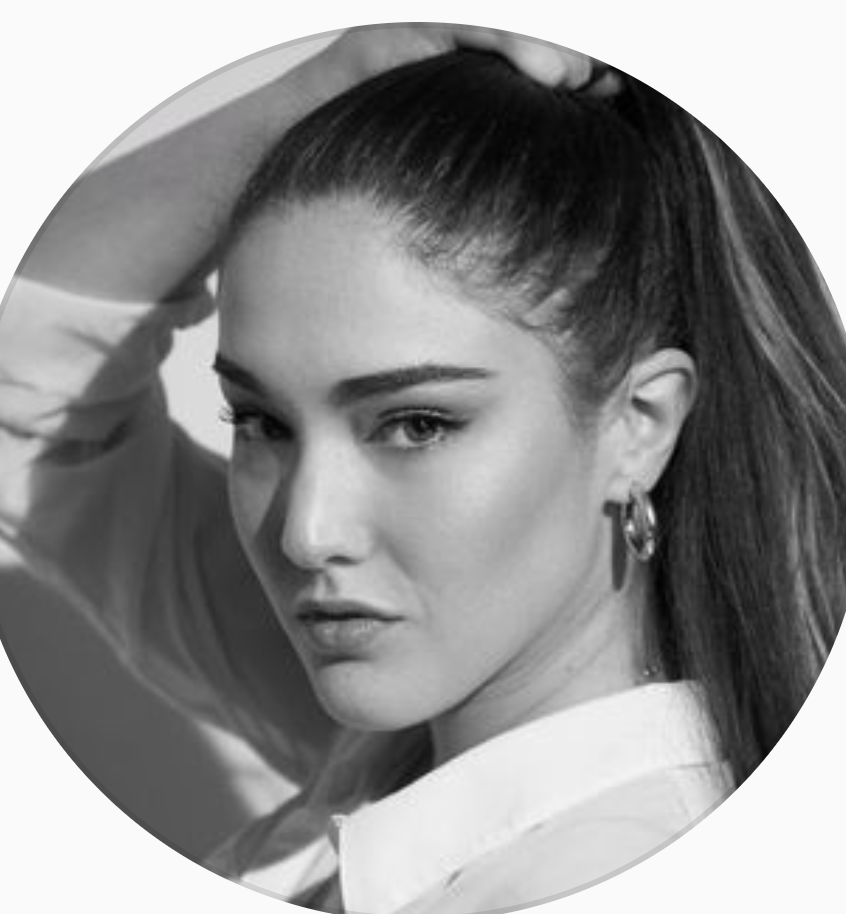
Alexandra Arriaga is a chemist, Public Health practitioner, medical researcher, and haircare influencer. Besides working as a scientist, she currently uses her knowledge and background to bust myths related to products and beauty practices on social media. She’s an advocate for using science to to optimize your beauty routine.
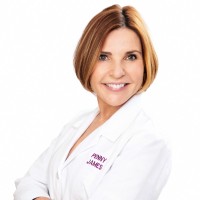
A board-certified Trichologist, Penny James works with anyone who is suffering from hair loss and scalp problems. She has over 20 years of work experience in the industry and has collaborated with celebrities such as Lady Gaga, Sarah Jessica Parker, Megan Hilty, Sting, Trudy Styler, and Lorraine Bracco. She began her career in London working for Trevor Sorbie, then moved to New York and became a founding stylist for Frédéric Fekkai.
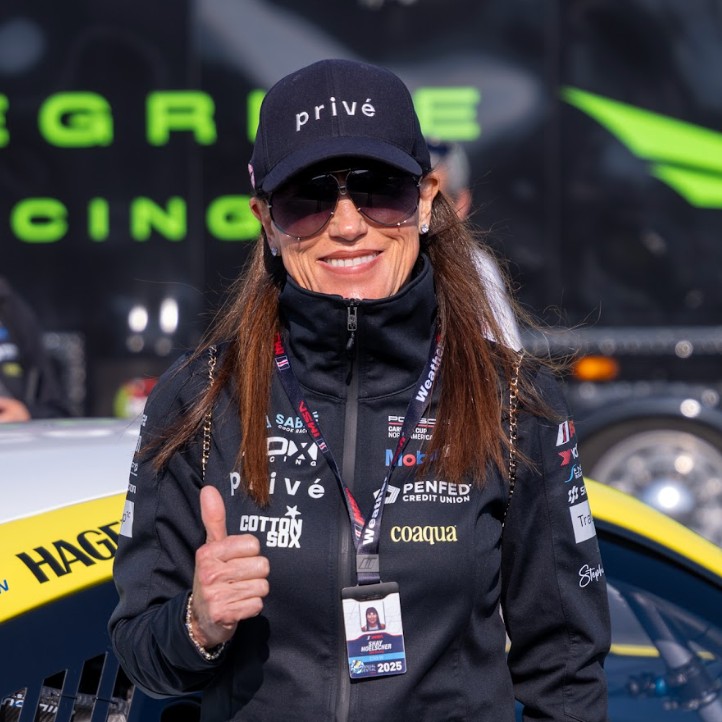
Shay Hoelscher is a veteran of the Professional Beauty Industry with more than 37 years of professional beauty experience. Currently, she is the CEO and Owner of privé products. Prior to privé, Shay held senior leadership positions across the industry including Sebastian International, Wella International and Nioxin Research (now all owned by COTY), TIGI (now owned by Unilever), Alterna Haircare (now owned by Henkel) and Cezanne Hair. Her experiences span a wide variety of channels of distribution, sales leadership, and cross-corporate functions in the US and internationally. Shay is dedicated to making privé products a force for good. She brings that vision into reality with 3 core pillars to: Empower women as a women-led company; Make a strong social impact by giving 1% of all revenue to a nonprofit to help women in need; Produce natural and clean, vegan products that are good for you and good for the planet.
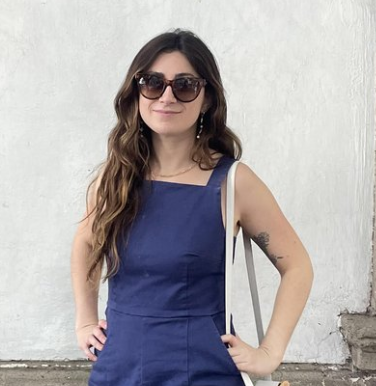
Alex Efstratiou is a hair stylist and colorist in New York City. Hailing from the Hudson Valley, after graduating from hair school she quickly found herself in SoHo, immersed in an intensive apprenticeship at Arrojo. After many years of traveling the country as a sought-out haircutting educator, she decided to shift her focus and incorporate hair coloring into her salon repertoire. With over 14 years in the industry, she is known for her dynamic haircutting skills and sun-kissed hair colors.
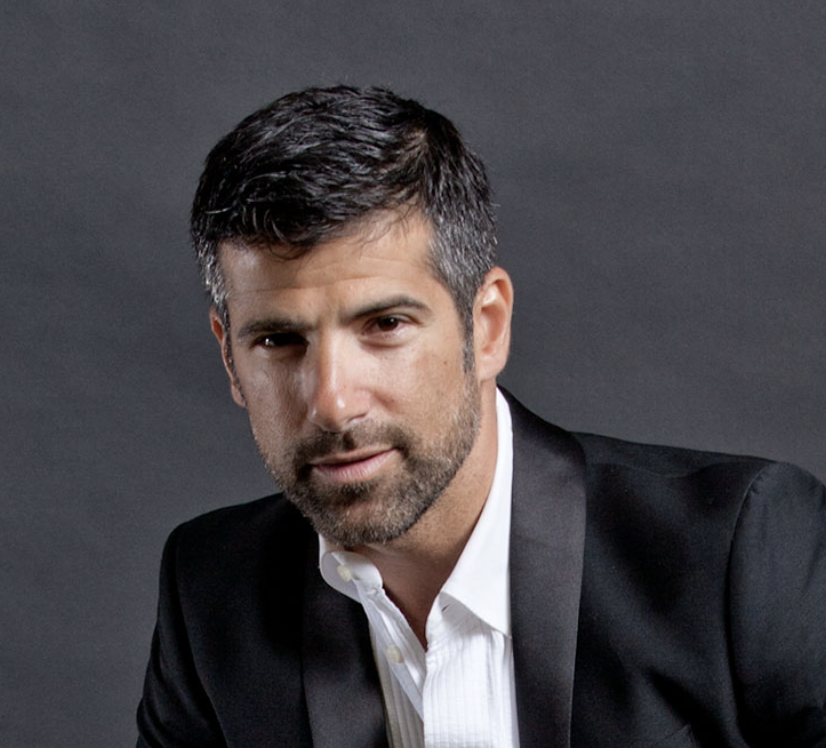
After a very successful career in Tel Aviv, Israel, as the top hair stylist with an A-list clientele including celebrities, models, and singers, Alon decided to make his move to the City of Angels and take his artistry to the next level. Immediately, he drew a high end clientele and connected with the best agencies in town including Ford, LA Models, and Wilhelmina, as well as CAA and William Morris Endeavor. Throughout his eleven year span in Los Angeles, Alon has collaborated with the industry's leading celebrities and models to create memorable looks and set trends in both entertainment and fashion. These names include Heidi Klum, Courtney Love, Melissa George, Ellen Barkin, and Kyle McLaughlin.
Get exclusive access to fashion and beauty trends, hot-off-the-press celebrity news, and more.
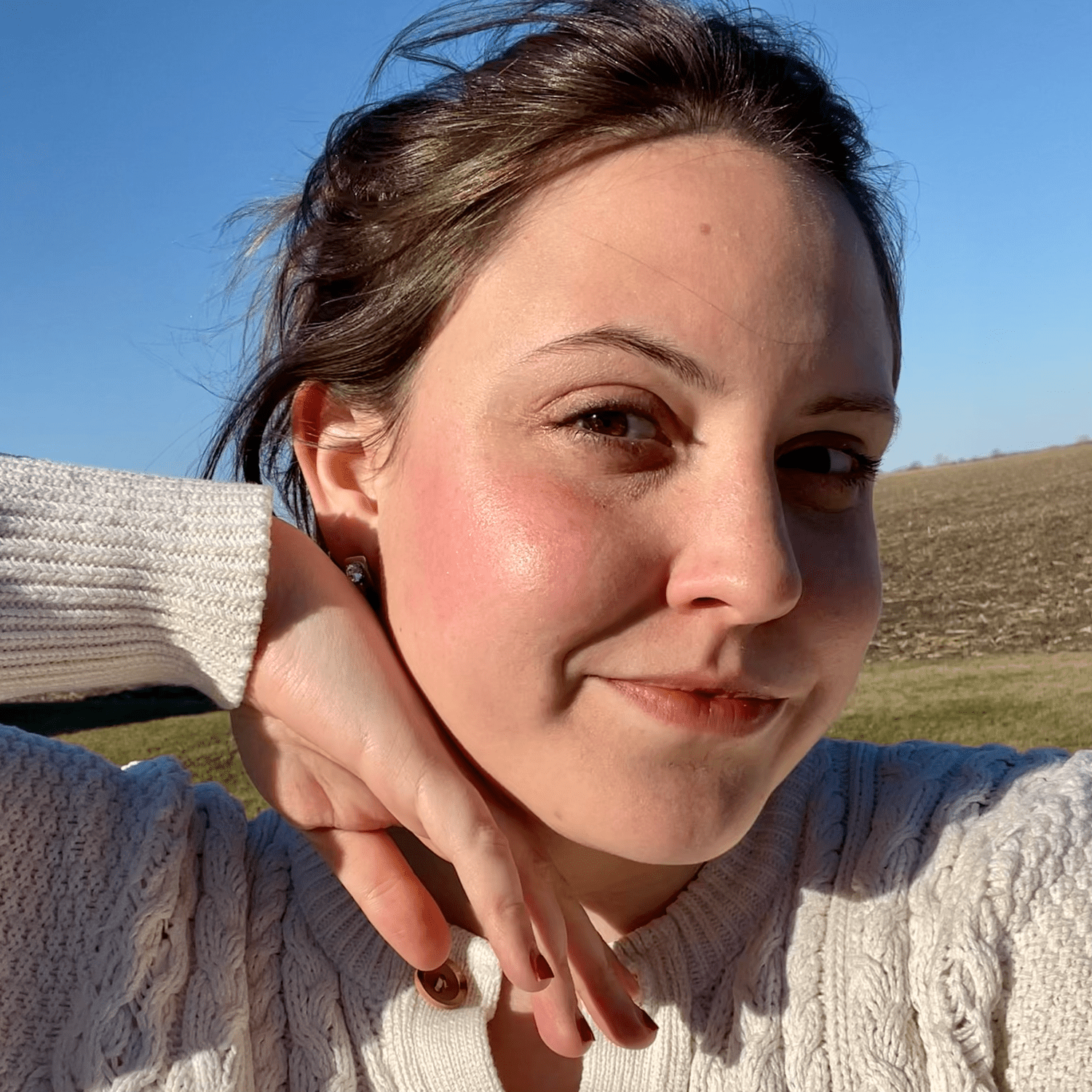
Sophia Vilensky is a Freelance Beauty Writer at Marie Claire with a beauty, wellness, and entertainment journalism portfolio that includes contributions to Byrdie, Bravo, Teen Vogue, and Us Weekly. Growing up in a family of beauticians—and through her own personal studies—she developed an in-depth understanding of aesthetics, cosmetic product formulation, and beauty treatment development and has also held roles as a senior copywriter, content strategist, and proofreader for top beauty and wellness brands. Even so, you'd be hard pressed to find her with her hair and makeup actually done. Sophia is based in Minneapolis and is a 2019 graduate of the University of Minnesota, where she majored in English and minored in cinema studies. During her time at the university, she was the Arts & Entertainment Editor for the Minnesota Daily, earning the 2019 Editor of the Year award for her work. She connected deeply with the Twin Cities arts scene, collaborating with leading beauty professionals, designers, and artists. Graduating Summa Cum Laude, her thesis—a close-reading of Vanderpump Rules—was featured on NPR. When not immersed in writing or testing new products, Sophia enjoys watching reality TV, reading, and exploring the newest woo-woo wellness trends. Keep up with her on Instagram @sophiavilensky.
- Samantha HolenderSenior Beauty Editor
- Julia MarzovillaFashion E-Commerce Editor
- Gabrielle UlubayBeauty Writer